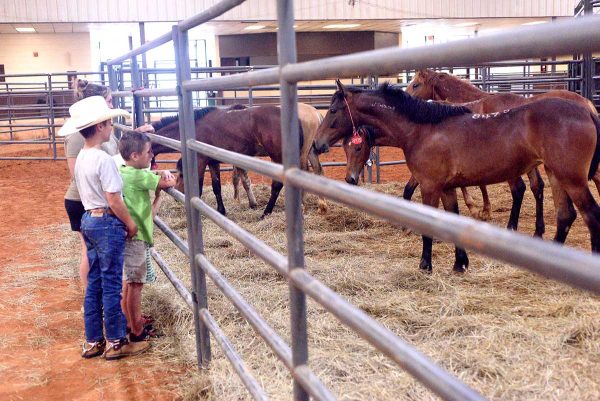Oklahoma leaders don’t care about higher education, State Regent says
Published 7:15 am Thursday, June 29, 2017

- College class
OKLAHOMA CITY — One by one, presidents from colleges and universities across Oklahoma filed up to the podium Wednesday to make their case to increase the tuition rates at their schools.
Each echoed a similar refrain.
They’ve cut faculty, staff and student jobs. They’ve eliminated courses, closed buildings and deferred maintenance.
But still, it’s not enough to make up for the millions state legislators recently cut from higher education programs statewide.
The only way to fill the rest of the gap, they told the members the State Regents for Higher Education, is to increase tuition and fees on the thousands of students enrolled in their institutions. Ultimately, it’s up to the state board to approve or reject any tuition and fee hikes.
In all, the institutions want to increase tuition and fees an average of 5.3 percent for the upcoming school year, said Chancellor Glen Johnson.
That means students who attend Oklahoma’s research universities — like the University of Oklahoma and Oklahoma State University — should expect to see an annual increase of about $424 for full-time students, officials said.
Students attending regional institutions will see their costs increase by about $261. And those enrolled in two-year colleges can expect to see a $280 price hike.
While the regents weren’t expected to vote on the tuition and fee hikes until Thursday, the requests are typically viewed as a mere formality.
“For anybody to argue that somehow that (budget cuts) means ‘Oh, we don’t need tuition increases,’ I don’t know where they think the money comes from,” said Regent Andrew Lester.
Since 2009, Oklahoma’s colleges and universities have increased fees and tuition rates an average of 4.9 percent, officials said. Lawmakers struggling to balance the state budgets, meanwhile, have slashed millions from higher education programs.
The legislative budget cuts are sending a clear message to Oklahomans, Lester said.
“We don’t care about higher education this state,” Lester said. “We don’t care about skills in this state. What do we need engineers for? We don’t want those. We don’t want nurses. We don’t want doctors. That’s what we’re telling people. We don’t value higher education.”
In 2002, state appropriations accounted for about 70 percent of Northern Oklahoma College’s operating budget. This year, they account for 30 percent, said Cheryl Evans, who is president of the Tonkawa-based school that also has campuses in Enid and Stillwater.
As word spread that the school needed to increase tuition rates by about 5.5 percent, Evans said students told her they were just glad it wasn’t worse.
“That’s kind of a sad reaction, I think,” she said.
Steve Turner, president of Northeastern State University in Tahlequah, said it’s not the job of lawmakers to create every job that’s out there.
“It is the job of state government, in my opinion, to roll out the welcome mat,” he said. “And I’m concerned that today we’ve put (out) a going-out-of-business sign.”
He said Gov. Mary Fallin has stressed the need for more degrees and a more skilled work force.
“At a time when we should be increasing the investment in one of the biggest drivers of change, higher ed, I stand before you today almost déjà vu all over again,” Turner said. “This is the third year.”
Turner’s school, which he said serves some of the poorest students in the state, is requesting a 2.1 percent combined increase in tuition and fees, which amounts to about a $4.25 per credit hour increase.
One of the only schools not asking for a tuition hike was Chickasha’s University of Science and Arts of Oklahoma.
President John Feaver said the school’s decision wasn’t based on “smug satisfaction,” but more practical reasons. Private donors pitched in $250,000 to help hold tuition stable for one year.
“We are not asking to increase tuition and fees because of the nature of the student body that we recruit and serve,” Feaver said. “In order to sustain competitive access to those students who are eligible to come to (our university) … keeping our costs at a competitive level is becoming terribly important.”
University of Central Oklahoma President Don Betz said enrollment is down slightly at his Edmond school, which serves just under 17,000 students. He expects that trend to continue for another year partly because of the proposed 6 percent — or $1.73 per day — tuition hike.
In addition, he fears the continued tuition increases will deter students from pursuing higher education statewide.
“The state needs to re-examine its priorities, its responsibility as an institution that was created for the welfare of the state,” he said.
Janelle Stecklein covers the Oklahoma Statehouse for CNHI’s newspapers and websites. Reach her at jstecklein@cnhi.com.


